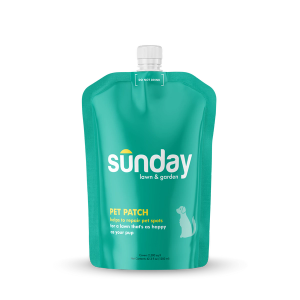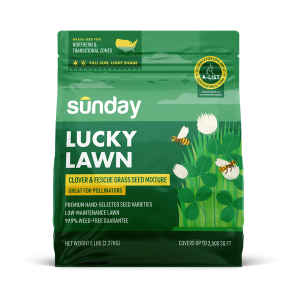Overseeding is the secret to a thicker, healthier lawn
If your lawn is looking a little tired after a long season (perhaps a bit thin from all the backyard fun) it’s time to introduce one of the most effective techniques in lawn care: overseeding.
To keep it simple, overseeding is the process of spreading new grass seed over your existing lawn. Think of it as calling in reinforcements: a fresh team of young, durable grass plants that fill in the gaps, muscle out weeds, and build a stronger, more resilient turf for the whole family. It’s THE long-term strategy for growing a better lawn.

The benefits of overseeding
This single addition to your lawn care routine makes a huge difference in your lawn's health and appearance. Here are the key advantages:
- It restores and thickens your turf. After a season of stress, even the best lawns can look worn out. Overseeding is the perfect way to rejuvenate your yard, filling in patchy spots with fresh growth.
- It’s a powerful natural weed defense. A thick, dense lawn is your best defense against weeds. By overseeding, you create a canopy so dense that weed seeds struggle to find the soil and sunlight they need to sprout. It's a proactive and highly effective way to keep unwanted plants out.
- You can upgrade your lawn's genetics. This is where we really nerd out. Overseeding is your chance to introduce an all-star team of grass varieties to your yard. Sunday's seed blends are packed with A-List certified seeds, chosen for elite traits like drought tolerance and disease resistance. You're literally making your lawn stronger and more self-sufficient.

The best time to overseed
Timing is critical. Overseed when conditions give new grass the greatest advantage to establish strong roots.
- For cool-season lawns (like fescue, ryegrass, and Kentucky bluegrass), the ideal window is when daytime temperatures are consistently between 55°F and 75°F. Fall is the absolute best time to overseed, with spring as a solid second choice.
- For warm-season lawns (like Bermuda), their peak growing season is when it's warmer, between 70°F and 90°F. Seeding in late spring through summer gives these grasses the heat they need to thrive.
Sunday Tip:
Seeding a cool-season lawn in the fall is a game-changer. The seedlings have the entire autumn to develop strong roots without the stress of summer heat, setting them up for a weed-free spring.
How to overseed your lawn
Here’s the simple process for getting those seeds settled in and ready to grow.
- Select the right seed. Start with a seed blend designed for your climate and your lawn's conditions (sun, shade, or high traffic). Our A-List certified seeds are bred for performance and resilience. Our Seed Finder Tool can help you match the perfect blend to your lawn.
- Prepare the area. Mow your lawn one notch lower than usual to help the new seeds reach the soil. If you have a thick layer of dead grass (thatch), it’s best to rake it out to ensure good seed-to-soil contact.
- Spread the seed evenly. Use a spreader for uniform coverage, aiming for about 2 lbs per 1,000 sq ft. Overlap your passes slightly to avoid streaks. For small, patchy areas, you can effectively spread the seed by hand. For more details, check out the Sunday grass seed instructions.
- Water consistently. New seeds need consistent moisture to germinate. For the first couple of weeks, water lightly but frequently to keep the top layer of soil damp. Once the new grass is actively growing, you can switch back to your regular deep-and-infrequent watering schedule.
Sunday Tip:
Even after the grass starts growing, it's pretty vulnerable to damage until the first mowing. If needed, fence off areas to keep out curious pets or kiddos.
Missed the perfect overseeding window?
Don't sweat it. Life happens, and you've still got plenty of options.
- If you have a cool-season lawn and it's too late in the fall, you can use a clever technique called frost seeding. If the ground isn't frozen solid yet, spread the seed. It will lie dormant through the winter and sprout as soon as the soil warms in the spring.
- For warm-season lawns, you're better off waiting for the next growing season. In the meantime, you can patch any large bare spots and focus on improving your soil health so it’s ready for next year.
Overseeding is one of the most rewarding things you can do for your yard. It’s not just about patching spots, it’s about building a lawn that’s tougher and greener—and some might say, the envy of the neighborhood—one tiny seed at a time.
Let's get growing
Our lawn engine uses satellite data to map out your lawn size and determine things like average rainfall, common weeds, and pest activity.
Cited sources
Overseeding athletic fields and lawns. Cornell Extension.
Seeding your lawn this fall? University of Minnesota Extension.



















